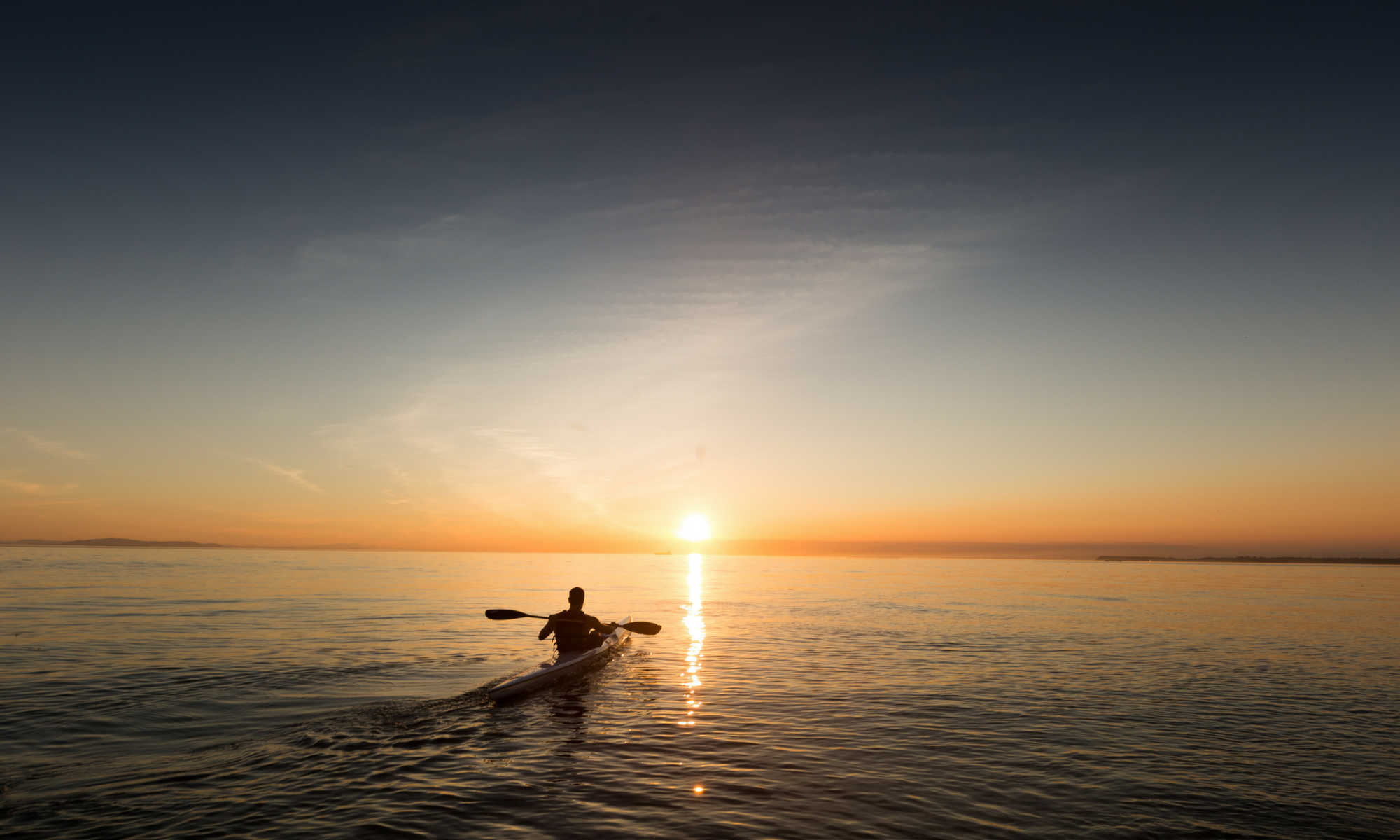Jump Ahead To:
CARBON FIBER KAYAK PADDLE: INTRO
Where nylon paddles fail, carbon paddles take the lead. Any high quality carbon fiber kayak paddle is going to be durable, lightweight, and worth the price. It is oftentimes going to be the difference between you having an average day on the water, and you coming home after limiting out on your desired fish! Let’s find out why it can make all the difference in your kayak fishing game!
Carbon Fiber Kayak Paddle – Overview:

Please note: This post contains affiliate links. An affiliate link means that we may earn advertising/referral fees if you make a purchase through our links.
Shortcut to the Best Carbon Fiber Kayak Paddle
The goal of this article is to teach you everything you need to know about your standard carbon fiber kayak paddle – with an eye towards kayak fishing, of course! I’ve included some general information, along with my top pick for the best carbon fiber kayak paddle on the market today. But let’s take this step by step, shall we?
To make this guide more organized, I’ve segregated it into sections. The first section discusses the basics of your typical carbon fiber kayak paddle, what they are, why you might want one, how it can be used to make you a better kayak fisherman, and so forth. Once you are familiarized with the basics, its time for the next section.
The second section focuses on the step-by-step procedure for using a carbon fiber kayak paddle. We like to think of this an easy-to-use checklist that will allow you to get out onto the water as quickly and safely as possible – after all, the fish are waiting! We discuss getting started with your paddle, ways to paddle, and the special care that carbon fiber needs.
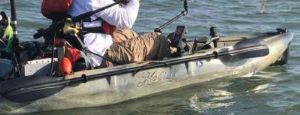
Next, I’ve discussed the various features to look for when you are evaluating one carbon fiber kayak paddle against another – you’ll quickly become an informed decision maker after reading this particular section. Knowing and understanding these features will help you decide which paddle you should choose for everyday kayaking, and which type of paddle is actually better suited for kayak fishing purposes.
Like I mentioned above, I’ve also included a link to my personal favorite carbon fiber kayak paddle. By no means is it the only GREAT model paddle on the market, but I have used it, enjoyed it, and I feel comfortable suggesting that KFC readers look into acquiring one for themselves. I’ve summarized my personal experience with the kayak paddle in the “My Experience” section of this article in case you’d like to learn from my personal experience. So without any further delay, let’s get started with the guide!!!
Parts of a Kayak Fishing Paddle
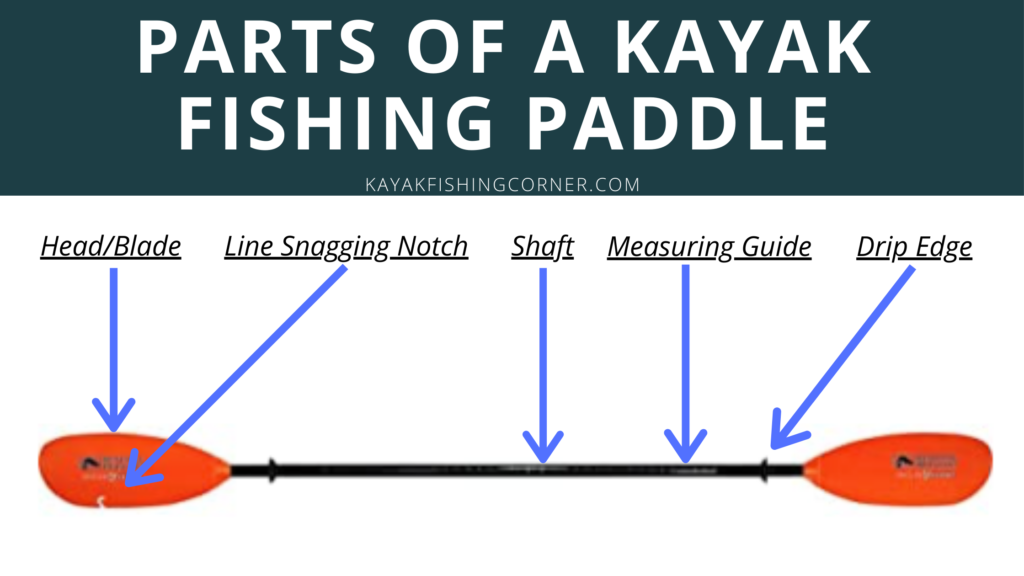
Carbon Fiber Kayak Paddle –The Basics

Please Note: As an Amazon Associate, I earn from qualifying purchases.
So you’re thinking of buying a carbon fiber kayak paddle? While it does seem to be the better choice, particularly if you want to become a better and more efficient kayak fisherman, I think it’s important you know why.
Carbon fiber is a lightweight, yet sturdy, alternative to nylon, fiberglass, or aluminum. Most carbon fiber kayak paddles weigh no more than 3 pounds, with many weighing as low as 1 pound. What does this mean for you? Your paddling motions can be faster, and it will alleviate the stress on your wrists.
But this isn’t the only reason why carbon fiber is loved and is rapidly becoming the premier material found in kayak fishing paddles. For one thing, this material has better shape retention and is lesser prone to bending or breaking. This means that heavy currents and tides won’t materially affect the blade of the paddle, and you can safely maneuver through most water conditions (even in the unlikely event that you are kayak fishing in white water).

It is a feature that other kayak paddles need to keep up with. Undoubtedly, most plastic paddles just tend to bend with enhanced amounts of water or current pressure. The greater the degree of bend, the less pressure you are asserting against the water or current, and the more the water or current is actually the one controlling you!
However, I feel like you should know the downsides of carbon fiber: The Cost. That’s right – with the high quality and high performance comes a high price. It’s not just the initial cost, either. Finding a suitable replacement for your carbon fiber paddle can be challenging. Also, unlike a chapter aluminum model, a carbon fiber kayak paddle can’t take the severity of dints and dings than can an aluminum model. This means you may be replacing it if you negligently expose it to damage! Be careful, and don’t invest in a high quality carbon fiber model of paddle until you are a confident paddler!
How to Use a Carbon Fiber Kayak Paddle?

You can use your carbon fiber paddle, much like any other paddle. There isn’t any significant difference in terms of how you execute your paddling strokes. However, it requires a lot of care and sanding to maintain the original quality. Here’s a handy guide on how to properly care for your carbon fiber paddle:
- Do not use your carbon fiber kayak paddle on the ground, as the material is only adapted to water.
- For instance, you should never use it as a “lever” like some kayak fishermen do with cheaper “throw away” paddles.
- Always read the instructions manual before assembling the paddle.
- Keep your paddles away from direct sunlight, epically if it uses other materials such as plastic.
- If you happen to puncture the blade, always use duct tape to cover up the area and get it repaired once you get home.
- For damaged or dented carbon, you need to sand down the area and then apply a layer of epoxy.
- Carbon fiber is a quite fragile material, so don’t place any heavy objects on top of it.
- Get any gunk out of the ferrule by using warm running water and tweezers to pull out any visible dirt.
- When you are done using it, make sure to thoroughly clean the paddle and store it in a protected area away from moisture and the elements (we suggest storing in the best kayak cover)!
Side Note: Wise beyond your years? Check out the best Kayak Paddle for Adults or skip the paddling altogether by using a Foot Control Trolling Motor!
Carbon Fiber Kayak Paddle – Important Features:
Paddle Weight:
Carbon fiber contributes to reduced weight – that is why its such a popular material work with. But depending on how big the paddle is, and how much carbon fiber is used, the weight can vary. Ideally, the weight should stay below 3 pounds. If the paddle is made entirely from carbon fiber, then it may weigh less than a pound or slightly more. Going up a size shouldn’t add more than 0.2 pounds to the overall weight. Lighter the weight, the easier it is on the kayak fisherman’s wrists, arms and shoulders, and the longer the fisherman can stay on the water without fatigue!
Paddle Length:
The paddle length is what you should highly consider when buying any kayak paddle, and particularly a carbon fiber kayak paddle. It all depends on the width of your kayak and your height. We have written a very thorough article about proper kayak paddle length, here! Below a handy table to summarize it. Keep in mind that you may need to account for differences in height caused by a longer or shorter torso length (the length from your waist to your shoulders), but the table below is a good general guide for most average sized fishermen:
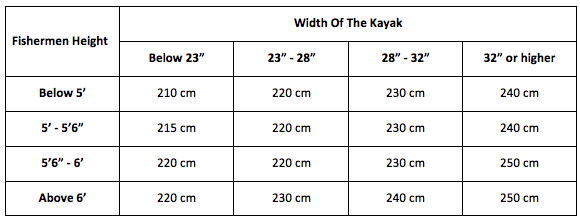
Carbon Fiber Shaft or Blade?
This is one thing most people, even experienced kayak fishermen, don’t consider. You can cut down on the cost by going for a paddle which only has either a shaft or the blades made from carbon fiber, but not both. A carbon fiber shaft is the best choice for faster rowing, as it reduces the weight on your wrists. You can easily flip the paddle to continue rowing on the other side.
A carbon fiber blade, on the other hand, adds more traction and whitewater compatibility to your paddle. While it is probably infrequent that you will be kayak fishing in white water environments, it is highly recommended that, if you can’t afford a 100% carbon fiber paddle, at least go for the ones with carbon fiber blades.
Shaft Design:
There are two types of shafts you can buy: straight or bent. A straight shaft is what most people will start with. It allows you to practice with different hand positions to find your most comfortable one.
A bent shaft, however, has curves that allow your hands to be placed at a much more comfortable angle.

We like straight shafts. They are better suited for kayak fishing purposes since you often times won’t be forced into positions where a bending of your hands to a more comfortable position would be required!!
Blade Design:
The design of the blades helps the paddle to move through the water while reducing water drag. Most blades accomplish this by being streamlined, with a rib in the middle. The rib guides water over each half of the blade, while the curved streamlined design allows for maximum water flow.
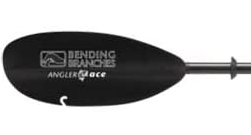
Some manufacturers make their blades asymmetrical, meaning that the tip of the blade is not flat. They do this so that when you hold the paddle at an angle to the water, the angled tip lays flat on the surface. This creates greater surface area and more momentum. Make sure to look closely at the design of your blades when evaluating one carbon fiber kayak paddle against the next!
Buy The Best Carbon Fiber Kayak Paddle
The best carbon fiber kayak paddle, at least in my humble (yet well informed) opinion is the one showcased above. It’s one of the best for lightweight kayak fishing during a backpacking trip as well. Why? This two-piece paddle can be broken down and zipped up in a bag, ready for your next kayaking trip.
The blades are made from nylon that’s been reinforced with carbon fiber. That makes them both stiff and ultra-light. The entire paddle only weighs 2.2 pounds. That is a significant benefit especially for kayak fishermen who want to minimize the weight on their wrists, arms and shoulders.
Each blade is angled at the tip and features a rib with a curved design. All of these features provide better water traction, lesser drag, and faster rowing. What does that mean for you? It means you have a better chance of beating your competitor to the prime fishing spot (or you could use a kayak trolling motor and really dust them)!

This paddle is designed particularly for those who prefer kayak fishing (as opposed to a paddle that is deigned for white water kayaking, for instance). The blades feature a hook retrieving system that helps in freeing any snagged hooks. Some fishermen also use it for fishing in a big heavy catch. Its great, as it is an extra “tool” that doesn’t take up any room and has great utility to nearly all kayak fishermen!
As for the shaft, it’s completely made from carbon fiber. It features a scale in both inches and centimeters, which can be used for various purposes. The scale comes in handy when you need to measure the size of a catch, or when you want to hold the shaft from a specific point. This is another example of the paddle being designed with the kayak fishermen in mind!!
As it is coated with carbon fiber, the paddle tends to float and not sink (though you can find a better floating kayak paddle if that is your main concern). So you won’t lose it as easily (which is important, because this thing isn’t cheap). But using a paddle leash is still recommended – better safe than sorry!
My Experience:

My own experience with this particular paddle has been mostly positive. Although made for kayak fishing, this kayak paddle works well even for recreational kayaking – meaning I can lend it to some of my friends, the responsible ones at least. I still wouldn’t recommend it for competitive kayaking, though, as the nylon blades aren’t the best at reducing drag.
The shaft is made entirely of carbon fiber, which is a good thing, as the shaft is usually the heaviest part. The blades are coated with carbon fiber, which essentially lends some stiffness. But they are not made from carbon. I’m guessing the one upside to this is the relatively lower cost. If both the blades and the shaft were 100% carbon, the cost would be higher.

I recommend this particular kayak paddle if you want a cheaper alternative to 100% carbon fiber. It’s lightweight, durable, and can hold out well in moderate current. But for tougher currents, I’d suggest investing in either a full carbon blade or fiberglass.
Pros:
- Lightweight shaft reduces stress on your wrists.
- Reduces drag in the water.
- Highly durable, corrosion resistant.
- Includes a hook retriever groove and a tape measure on the shaft.
- Made for fishing, but can be used for recreational activities as well.
Cons:
- Breaks only into two pieces when it could break into four.
Other than that, the tape measure on the shaft and the snap-on ferrule is a 10/10. I mean, shafts are just boring old rods. Why not vamp them up a bit? It’s a creative idea and is encouraging when you find a big enough catch!!
Side Note: If you are worried about becoming off balance while paddling on one side or another, you should look into acquiring one of the 5 Best Kayak Outriggers – they’ll keep you nice and balanced, even while paddling quickly!!!
Conclusion:

I hope you found this KFC article to be a helpful guide in teaching you everything you need to know about a standard carbon fiber kayak paddle. A full-carbon paddle will work the best, but it isn’t always the most practical solution for all kayak fishermen (plus, it is very pricey). But if you’re on a tight budget, the model showcased above is my recommendation. It gives you all the benefits of a carbon fiber kayak paddle, just at a lower cost!
But you get what you pay for. The blades of this paddle aren’t entirely carbon fiber; it’s still the best choice for most beginner and moderately experienced kayak fishermen!
Comments
What do you think about the the carbon fiber kayak paddle that we’ve showcased in this article? Do you think it is a good paddle for kayak fishing? Perhaps you’ve found something that works better? Any other tips or tricks you’d like to share with your fellow kayak fishermen? Please feel free to post a comment on our message board below! We read and reply to every comment and absolutely love engaging with the kayak fishing community!
